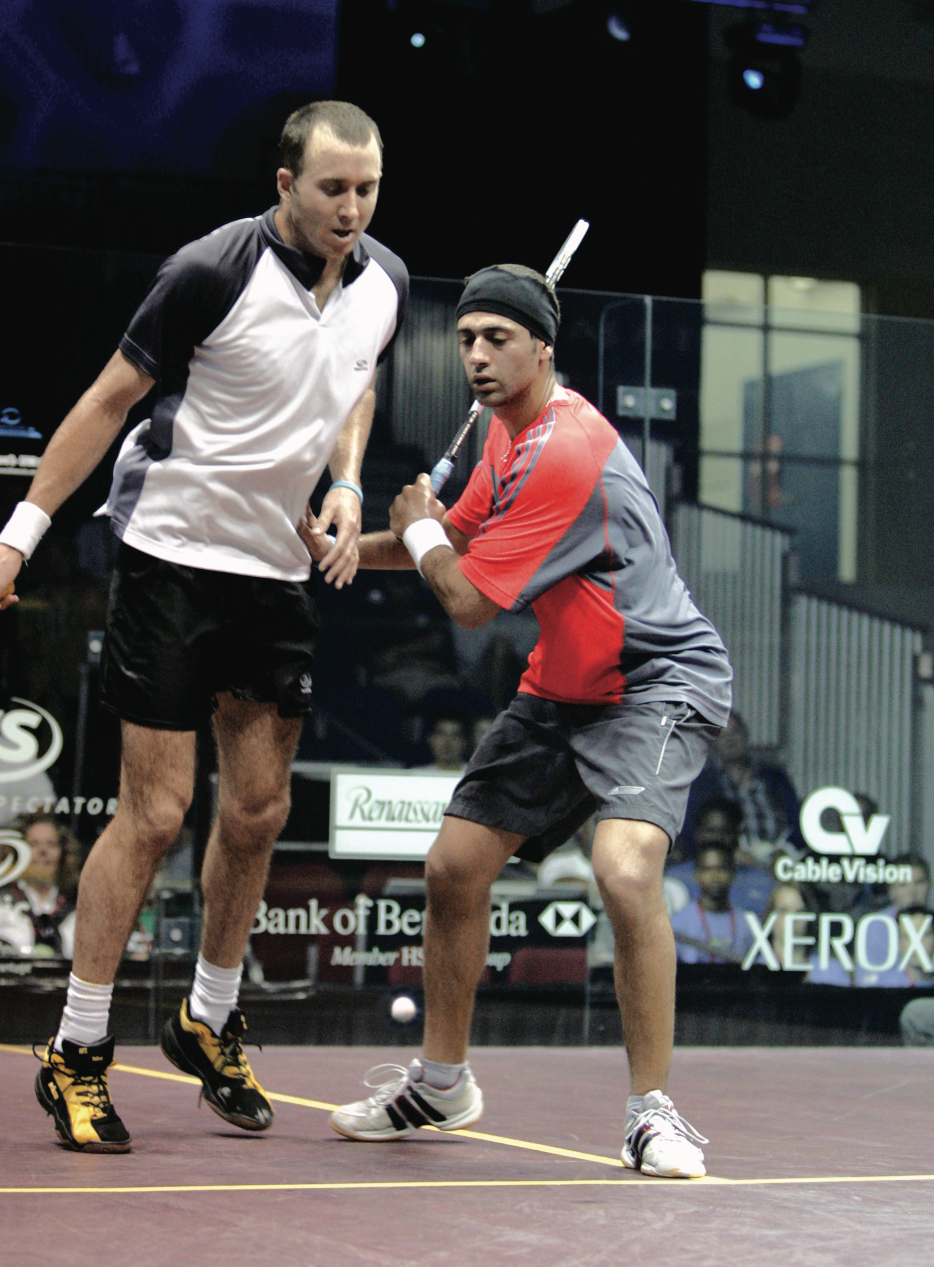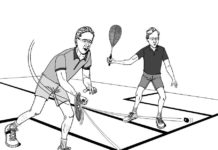By Rod Symington, WSF Referees and Rules Committee
At times squash can be a crazy game. As long as the ball travels up and down the walls or cross-court, life is comparatively simple. But sooner or later, something unexpected happens, and it is then that the players are often unaware of the Rule that applies or disagree about which Rule should apply.

A recent e-mail brought this situation into focus:
1. Player A has just played a back wall boast that hits the front wall around the service line and lands in the left front court.
2. Player B, standing a foot in front of the T, has his racquet fully raised on the backhand and waits for the ball to come within playing distance.
3. Player A recovers from the back wall, and assumes a ready position just clear of Player B’s raised racquet. He is leaning slightly forward so as to move quickly to pick up a straight drop.
4. B then makes a downward movement of the racquet towards the ball, but does not strike it; it is only a fake. He then starts to take his racquet back for a second attempt.
5. By this time, however, A, thinking that B has played a drop, springs forward, and is struck by the ball. There is no time for him to check his movement and try to clear.
What should the referee do?
I don’t usually like “What if…?” questions, as squash scenarios are difficult to put into words accurately (that ‘s why I usually say to people: “Show me the video”), but the scenario described above is easy to visualize and the correct thinking on the decision is clear.
The opponent has the obligation to remain clear of the swing until the striker has made an attempt to play the ball. An attempt is defined as “The movement of the racquet from a backswing position towards the ball.” Note that there is no mention here of intent: Whether or not the striker intends to hit the ball, the movement of the racquet forward indicates an attempt under the Rules. Thus a fake swing is also considered to be an attempt.
In the above scenario the opponent was clear of the first attempt, and once that attempt has been made, the opponent is not to blame if he or she is hit by the ball. But before we can make a decision, we need to know another important factor: Since a player may make any number of attempts to hit the ball before it bounces twice, would the striker have been able to make a good return on a further attempt?
If yes, it is a let.
If no, the opponent wins the rally.
(You can find all this laid out in Rule 10.1.)
We also need to clear up another common misconception here: “shaping”—that is, merely holding the racquet ready—counts as nothing. As long as the striker merely holds the racquet ready, the opponent must remain clear of the swing. So if I hold my racquet ready (without moving it forward) and then let the ball go and it hits my opponent (who is standing behind me), I win the rally. (In effect, the opponent has been hit with his or her own shot coming back from the front wall.)
Players also often are not aware of another important provision of this Rule: If your opponent swings and misses and then is able to make further attempts at the ball, you “must make every effort to avoid […] interference on the further attempt” (Rule 10.3.2). If you make no attempt to clear, you may lose the rally. This may seem unfair (the striker is getting several bites at the cherry), but this is the Rule in force at the moment.





